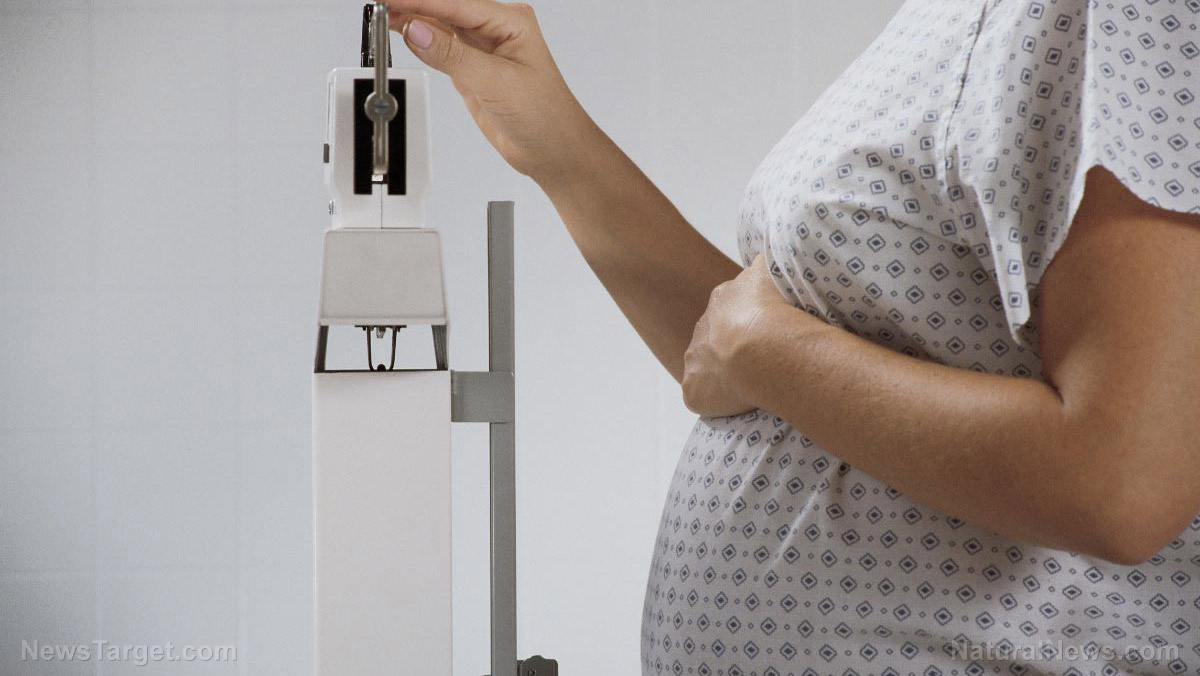Lifestyle habits and pregnancy: 25% of stillbirths are caused by a lack of oxygen for baby, which could be prevented
07/23/2018 / By Zoey Sky

Stillbirth is defined as the death of an infant within a mother’s womb at least 20 weeks after pregnancy. But according to the results of a new study, at least 25 percent of the stillbirths in America “could be prevented by improving women’s healthcare before pregnancy.”
The findings also revealed that thousands of stillbirths in the country are caused by “placental insufficiency,” or when there is insufficient blood flow to the placenta which “deprives the fetus of oxygen” when the mother is in labor and during delivery.
The researchers noted that high blood pressure (preeclampsia), smoking, and heavy drug use are the biggest risk factors for placental insufficiency. They added that improving the “diet, exercise, and general well-being” of pregnant women can significantly decrease the rate of stillbirths in the U.S., which hasn’t gone down much from 24,000 annual cases that have been recorded since 2006.
Over the past three decades, prenatal care has improved thanks to innovations in medical technology. Per the Centers for Disease Control and Prevention (CDC), this was a significant factor in the dramatic decline in stillbirth rates. But despite the good news, the stillbirth rate “has remained relatively unchanged since 2006.” (Related: Reproduction industry risks: infertility treatments increase risk of stillbirths.)
Dr. Jessica Page from the University of Utah Health Center, who was the lead researcher, spearheaded a secondary analysis of 512 stillbirths from the Stillbirth Collaborative Research Network. Out of the 512 recorded cases, Dr. Page et al. reported that at least 22.3 percent of the stillbirths were “potentially preventable.”
When they looked into data concerning the stillbirths, the researchers discovered that placental insufficiency caused at least 13 percent of preventable cases. This was followed by medical complications (six percent), hypertensive disorders (four percent), and premature labor (three percent). About 80 percent of the stillbirths that belong to more than a single category were also linked to placental insufficiency.
The placenta disorder affects about one in every 300 pregnancies. The chances of the infant experiencing hypothermia and low blood sugar also increases.
For the study, the researchers also considered stillbirth by race and ethnicity. At least 25 percent of stillbirths were noted in Hispanic women, 27 percent in black women, 19 percent in white women, and 19 percent in women of other “race-ethnicity” categories.
While these results weren’t significantly different, the researchers believe that the findings highlight a “larger trend” of women of color with a higher stillbirth rate compared to white women. In 2009, a separate study by the National Institute of Health determined that black women were “twice as likely to give birth to a child that’s stillborn than white women.”
The scientists advise that trying to diagnose and treating placental insufficiency at an earlier stage can help minimize stillbirth rates. For preeclampsia, a major risk factor of placental insufficiency, monitoring a pregnant woman’s blood pressure will increase infant survival.
For diabetes, keeping tabs on the patient’s blood sugar can boost the infant’s chance of survival. Health experts from Florida Hospital added that treatment options for placental insufficiency include bed rest after or during the whole pregnancy. The CDC concluded that women are at risk of stillbirth if they are overweight, drink alcohol, or are smokers during the pregnancy.
Tips to prevent stillbirth
If you’re worried about stillbirth during your pregnancy, try some of the preventive measures listed below:
- Maintain a healthy lifestyle – Following a balanced diet can help you and your baby stay healthy during the pregnancy. Eat foods rich in important nutrients, don’t skip meals, and minimize the consumption of high fatty food items.
- Exercise regularly – Obesity is a major reason “for birth complications and stillbirth,” so keep an eye on your weight gain during your pregnancy. At least 30 to 60 minutes of “low to moderate impact exercises” can help you stay in shape. If you’re too tired, walking can help. Always consult a healthcare professional before you engage in physical exercise.
- Quit bad habits – Now is the best time to quit “smoking, drugs, and alcohol consumption.” These are all known to cause pregnancy problems and they can “increase the risk of stillbirths.”
You can read more articles about stillbirth prevention and other pregnancy news at WomensHealth.news.
Sources include:
Tagged Under: drug abuse, high blood pressure, hypertension, lifestyle dangers, obesity, preeclampsia, pregnancy, pregnancy risks, pregnant women, prenatal care, research, science, stillbirths, stop smoking, women's health, women's healthcare




















